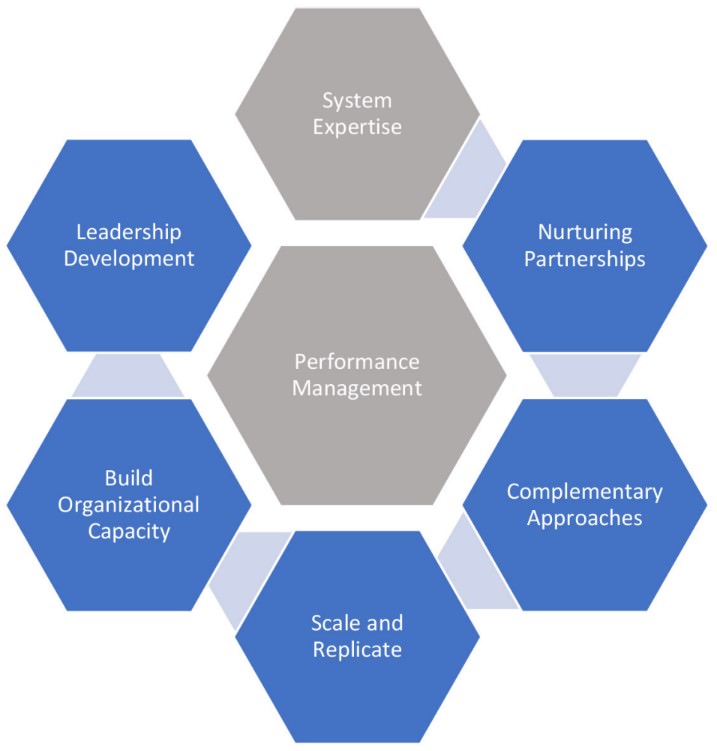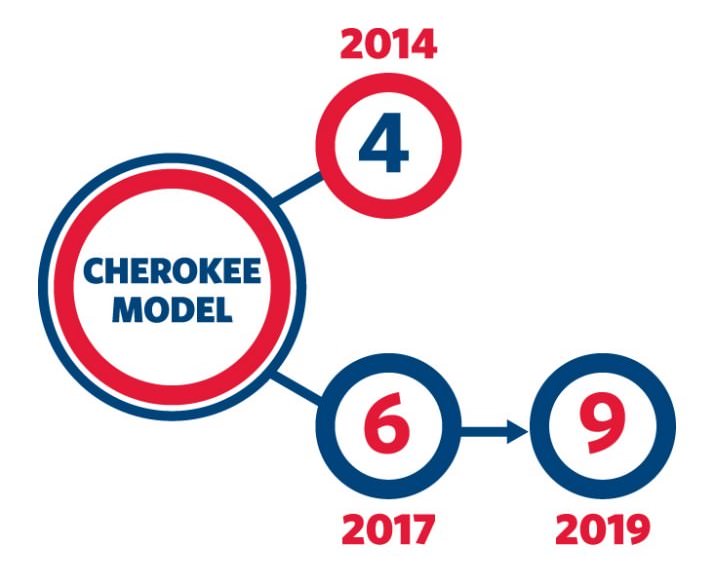Elevating Best Practices and Building Evidence: Scaling and Replicating
For 20 years, The Nicholson Foundation worked to advance meaningful change in safety net service systems in New Jersey. Its grantmaking journey is described in Changing Systems, Changing Lives: Reflecting on 20 Years. Through stories and related text, the book showed how a small family foundation could take six guiding themes and put them into action through grants and partner support. In the process, the Foundation spurred real systems change that benefitted individuals, families, and communities.
This blog is part of a series that shows how the Foundation’s work aligns with the concepts from literature and practice embodied in the components of Brown and Rosser’s model.

Scaling and Replicating for Systems Change
Brown and Rosser argue that foundations often support a series of pilot projects but don’t put attention and effort into what is required to expand the scale of those projects to achieve broad impact. As a result, their funding doesn’t translate into durable systems change. In describing the “Scaling and Replicating” component of their model, they note that this process entails long-term investment and monitoring changes to maintain program fidelity, as well as ensuring that learning is ongoing and benefits community and street-level leaders.
Here’s how the Foundation’s work exemplified this aspect of Brown and Rosser’s systems change model: Beginning in 2010, The Foundation substantially increased its investments in health, principally to strengthen the primary care component of the safety net healthcare system. It recognized that behavioral healthcare was a critical component of that system but that few primary care providers had the capacity or expertise to provide this type of care.
Behavioral healthcare is care for mental health conditions, substance use disorders, and lifestyle changes related to chronic medical conditions.
Over the course of 10 years, the Foundation built a multi-pronged effort to alter the model of primary care to integrate behavioral health. We allowed the initiative to evolve and funded new projects to address needs that arose over time. This gave us the ability to adapt best practices to suit New Jersey circumstances and to build evidence along the way. Throughout, we stayed in close touch with our grantees to ensure their work remained faithful to the models we supported and to encourage their learning and ability to continue independently after our funding ended:
- In 2013, we conducted small-scale assessments and an initial pilot project to determine the feasibility of integrating behavioral health into Federally Qualified Health Centers (FQHC). We also searched for a good model of integrated care and found it in Cherokee Health Systems, a Tennessee-based FQHC and community mental health center.
- We then funded Cherokee to implement its model in a four-site pilot project within two New Jersey FQHCs. Cherokee provided close and constant support to the sites during their transition to integrated care.
- During the pilot, it became increasingly clear that New Jersey’s licensing and regulatory requirements made it hard for the clinics to generate enough income to sustain the integrated services. We asked Seton Hall University School of Law to conduct an analysis of these barriers and to make recommendations to the state. Their report was issued in March 2016.
- The success of the four-site pilot and the Seton Hall report led us to fund six additional sites in 2017 and three more in 2019. Cherokee provided technical assistance to all the new sites, refining it based on knowledge gained from the pilot.
- The next step was to think about how to include this new approach in healthcare provider training. Beginning in 2018, we supported the conceptual planning and early development of new educational and clinical practice infrastructures and curricula at eight health-related professional schools at Rutgers University. These new approaches incorporated behavioral health into all phases of healthcare clinical training and emphasized collaborative and team-based care.
- Finally, we worked with two other New Jersey foundations to expand integrated care beyond adults. We funded the introduction of HealthySteps, an evidence-based child development and behavioral health pediatric care model, into three pediatric primary care practices within a major New Jersey medical health system.

By avoiding the pitfalls described by Brown and Rosser—namely by investing carefully over multiple years and scaling up as organizational infrastructure and real-world conditions permitted—the Foundation was able to build on success over time. As a result, it was able to fundamentally strengthen adult and pediatric primary care in New Jersey.
Learn More
- Read the other blogs in this A Framework into Action series:
— Finding and Nurturing Effective Partnerships: Supporting Healthy Children
— Finding and Nurturing Effective Partnerships: The New Jersey Health Care Quality Institute
— Complementary Approaches
— Organizational Capacity
— Leadership Development - Read the Seton Hall University School of Law report Integration of Behavioral and Physical Health
Care: Licensing and Reimbursement Barriers and Opportunities in New Jersey. - Read Brown W, Rosser W. A Framework for Creating Systems Change. The Foundation Review,
2023;15(4):50-6. https://doi.org/10.9707/1944-5660.1678 - Order a free copy of Changing Systems, Changing Lives: Reflecting on 20 Years. This book describes the 20-year journey of The Nicholson Foundation.

